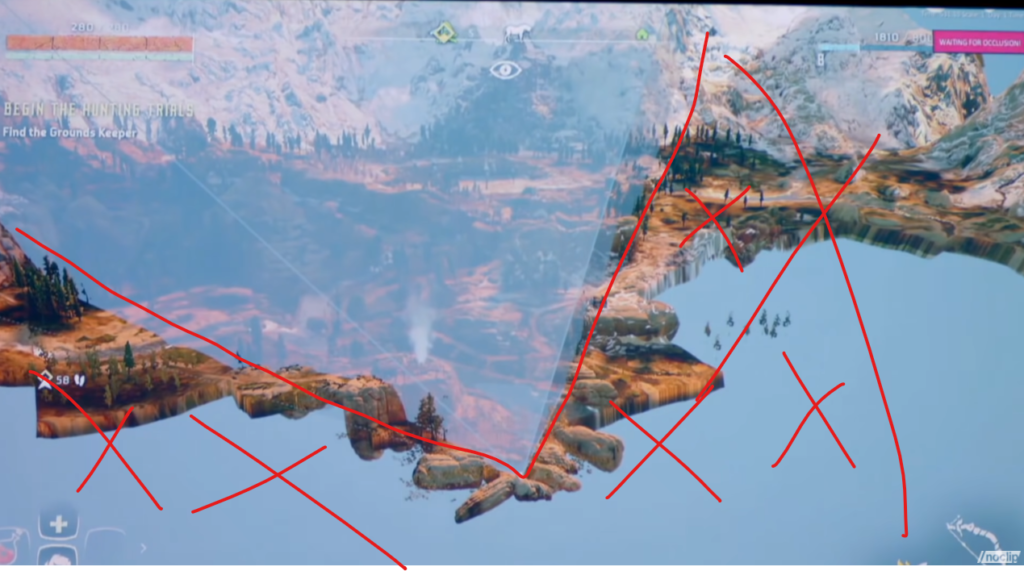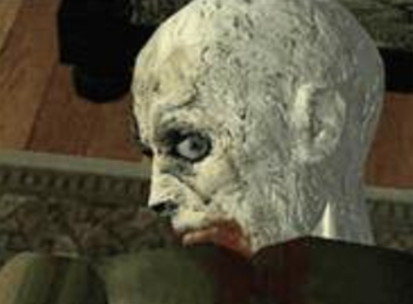Are Unskippable Cutscenes a Games Usability Issue?
There are probably not many facets of video games more contentious than the cutscene, the short, or sometimes very long, scripted cinematic scene that, from the player’s perspective, is either a necessary piece of emotional connective tissue keeping the player tethered to the narrative or just an unwanted speed bump along a highway otherwise filled with hi-octane action. The ham-fisted solution to these opposing views is to give players the ability to skip the cutscene. Players who want it can have it. Players who don’t want it, can leave it. But as with all things related to usability, the design intent and the player perception must be taken into account. Not to mention, developers must consider the technical implications of modifying cutscene behavior. It’s not as easy as cutting out the scene.
Player Perception on a Skippable Cutscene
First, let’s look at the player perception angle. If given the option to simply skip all cutscenes, players may perceive that the cutscenes aren’t important, and therefore their confidence in the game’s design direction is compromised. Their reservoir of goodwill starts to deplete. Alternatively, a skipped cutscene could lead to confusion about the game’s narrative, which also could reduce player confidence in the game’s direction. The thinking would go, “why would a designer include such an intrusive yet ignorable element?” There’s some dissonance between what the game wants of the player and what the player thinks the game wants of the player.
Technical Reality of a Skippable Cutscene
But, skippable cutscenes, beyond just being potentially bad in practice, isn’t even possible in practice, much of the time. Video games are all smoke and mirrors, They’re just an hours long magic show where rocks are hollow and the world outside your narrow vision cone simply doesn’t exist. Cutscenes are just another pawn in the birthday party magician’s sack of tricks. For example, cutscenes are sometimes used to keep the player engaged as the game loads. In this case, they simply cannot be skipped, at least not until a certain amount of the game has been streamed in.

So if unskippable cutscenes can possibly cause player frustration. And skippable cutscenes can possibly cause player frustration. And cutscenes that are skippable midway through can possibly cause player frustration. What’s the solution? The obvious solution is to create cutscenes that are so captivating that a player happily watches them. But that’s not a reality. Different things captivate different players in different ways.
Games Usability and a Skippable Cutscene
First, we have to understand a bit more about how cutscenes impact game usability. Players should always be able to perceive that the system, the game, is functioning. Loading spinners, or throbbers, are a good example of this. Cutscenes can be problematic because they can reduce this transparency. These days games can look so good that players may not know a scene is a cutscene until they try to skip it. So, why not add a loading spinner. For aesthetic reasons, these types of cutscenes that mask game streaming likely shouldn’t have a giant loading spinner in the corner.

Perhaps game designers can leverage conventions from other, familiar interfaces. Google’s material design uses a determinant linear progress indicator which is fairly unobtrusive and could make for a good game loading indicator at the bottom of a cutscene. But I’m a games usability guy. I’m not a designer.
A determinant linear progress indicator
One way some designers have attempted to address this dissonance is to provide feedback when an impatient player presses a button in an attempt to skip the cutscene. Sometimes designers flash an “unable to skip cutscene” indicator. This works because it tells the user that the system is functioning but that they have to wait a bit. This gets even more potentially frustrating for players when games sometimes allow cutscenes to be skipped and sometimes don’t. The inconsistency causes unnecessary friction. I’d argue it would be better if the player knew why they were unable to skip the cutscene. Maybe “Game Loading. Unable to skip cutscene.”
What if the cutscene is story relevant, and therefore possibly essential to the designer’s intended gameplay experience? How do you force a cutscene while also giving the player freedom? It’s a tough call, but ultimately designing around player freedom is probably the way to go. I’ve seen some games handle this by including summarizing banter between characters immediately following a cutscene. In cases where the player character has an NPC companion that was featured alongside in the cutscene, the two could comment on the content of the cutscene as the player is moving the character toward their next goal once the cutscene has passed. This way a cutscene-hater can still get the gist of the narrative, enough at least to stay invested. Good game design also reinforces recognition rather than relying on player recall. In our case, this could mean that mission names and descriptions are robust enough that a player need not watch a cutscene.
In the early days of cutscenes, fully rendered cutscenes, rather than in engine cutscenes were all the rage. Sure they were visually jarring to the player, but we largely didn’t care because “holy crap that looks real!”. But they were impressive from a technical perspective. Not only that, but I argue they also were helpful from a usability perspective, in a strange way. The unlikely benefit to this visual incongruity between polygon-filled gameplay and smooth-rendered cutscene is that players easily understood that cutscenes were different, they looked way more impressive than the gameplay, and therefore players understood, even without overt feedback, that different rules were at play. The inability to skip a cutscene made intuitive sense. Also, remember that rendered cutscenes were still new, so many players didn’t want to skip the cutscenes because, “holy crap that looks real”.

But now with most cutscenes happening in-engine, the visual fidelity alone between gameplay and cutscene isn’t different enough for players to let game designers get away with forcing us to watch the cutscenes, at least not without a system status indicator of some sort. It is true that the cinematic nature of cutscenes sometimes still project a sense that the rules of the game are different, but I’m not confident that’s enough.
All of this may be moot soon though now that two of the three major consoles have SSD drives. The much faster data streaming capabilities with SSD drives means cutscenes may not be required for hiding loading screens anymore. This is a shame to me, as I personally enjoy most cutscenes, but the beneficial trade-off is that if game designers do include a cutscenes in a world in which loading is so quick it’s essentially imperceptible, I’ll know that the cutscene is intentional and for narrative purposes. And so, as a player, I’ll have greater confidence in the design direction of the game. Seeing a cutscene will be like seeing a rug in your neighbor’s living room and knowing it’s there because it actually brings the room together and not because it’s hiding a vomit stain from that time when Frank’s aged tuna salad culinary experiment turned out exactly as you’d imagine it would.
Credits and Mentioned:
Music credits
- Bossa Antigua by Kevin MacLeod, Link: https://incompetech.filmmusic.io/song/3454-bossa-antigua, License: http://creativecommons.org/licenses/by/4.0/
- Pump by Kevin MacLeod, Link: https://incompetech.filmmusic.io/song/4252-pump, License: http://creativecommons.org/licenses/by/4.0/


